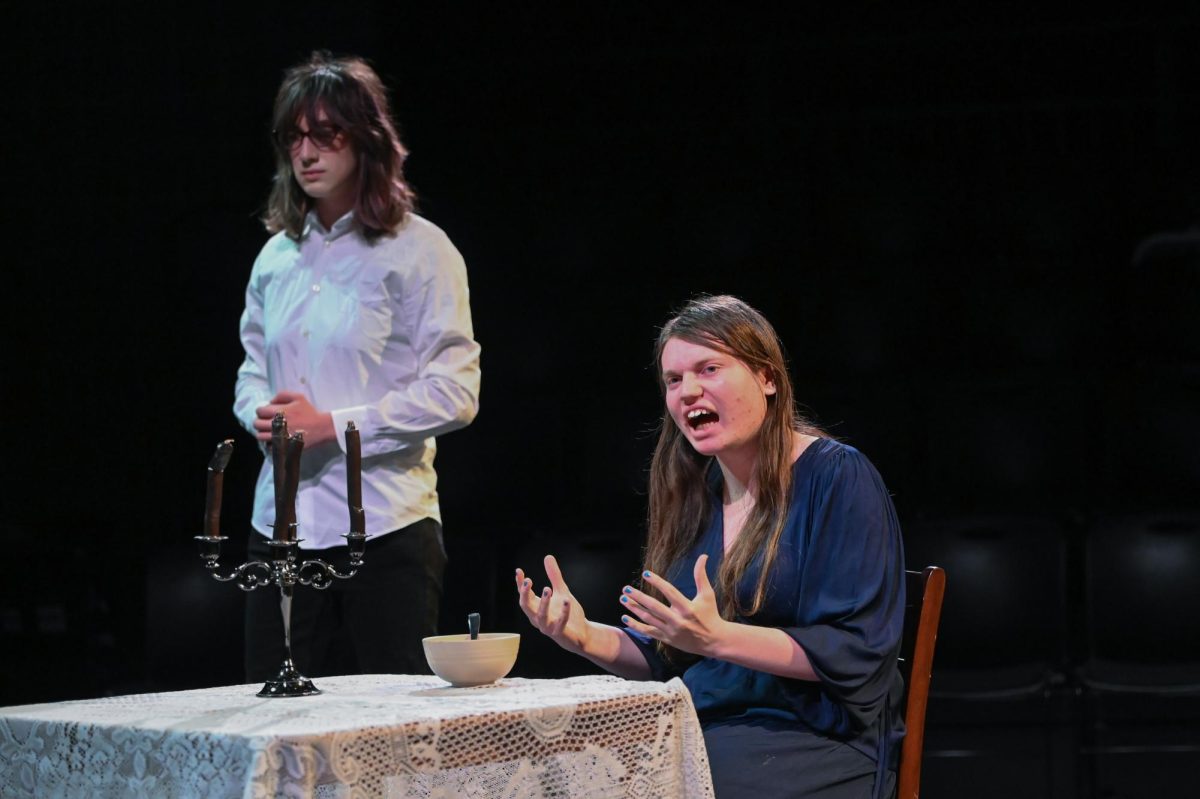A new generation of wizarding drama landed in Chicago on Sept. 26, with Tony Award-winning hit “Harry Potter and the Cursed Child” opening at the James M. Nederlander Theatre in the Loop. Chicago is the first stop for the production’s first-ever North American tour after opening in London in 2016 and on Broadway in 2018.
The creative team has condensed the two-part, nearly six-hour epic from those two cities into a streamlined touring version that runs just under three hours — but the shortened production is filled with magic tricks and theatrical inventions that will have the audience wondering, “How did they do that?” for days afterward.
The plot of “Cursed Child” takes place 19 years after the events of the seventh novel, “Harry Potter and the Deathly Hallows.” Harry is now married to Ginny, and they’re dropping off their son, Albus Severus Potter, at King’s Cross Station on his way to Hogwarts. Ron and Hermione are married and dropping off their own daughter, Rose. Draco, too, is watching his son Scorpius leave for school after the death of Draco’s wife and Scorpius’ mother, Astoria Malfoy.
Over the next three hours on stage, unexpected friendships are forged, battles occur, and the past and future are changed forever.
Much of the focus of the play’s creative team seems to have been on creating a magical spectacle that could live up to J.K. Rowling’s vision and the high-budget Hollywood special effects of the film series. Christine Jones, who won a Tony Award for the play’s scenic design, said in an interview with the Midway that making the magic work in different locations and theaters during the tour is a challenge for the designers but becomes incredibly satisfying once the pieces come together.
“A show like this really is singular in how the collaborative elements are what make the magic,” Ms. Jones said. “It’s not just one department that makes a magic effect. We all work together to create an illusion, and everybody has to be in detailed communication about what the specific needs are. So, it’s like solving a very complex puzzle.”
Ms. Jones recalls the early days of designing the set as incredibly fulfilling in terms of both creation and community. Many of the production’s designers felt that the creative process was, in its own way, a trip inside the world of Harry Potter with a group of close friends.
“We all would say that we felt like we had gone to a school for magic, and that’s really what it felt like,” Ms. Jones said. “Like we had all gone to our own version of Hogwarts. We all went to London, and we worked in a warehouse building just outside of London, and we got together literally with paper and string and cardboard and tape and fabric and fans, like kids playing a game together.”
That creative collaboration seems to have paid off. The play also won Tony Awards for its New York production: best play, direction, costume design, lighting design and sound design. The set, lights and magical design come together to create visual effects such as characters being sucked into coin slots, transforming into entirely different people, or having steam blow out of their ears before your very eyes.
So the play arrives in Chicago after a multi-year award-winning run in London and New York and appears ready to enchant audiences as it sets out on its national tour. Catch it now before it disappears — it will run in Chicago until Feb. 1.









